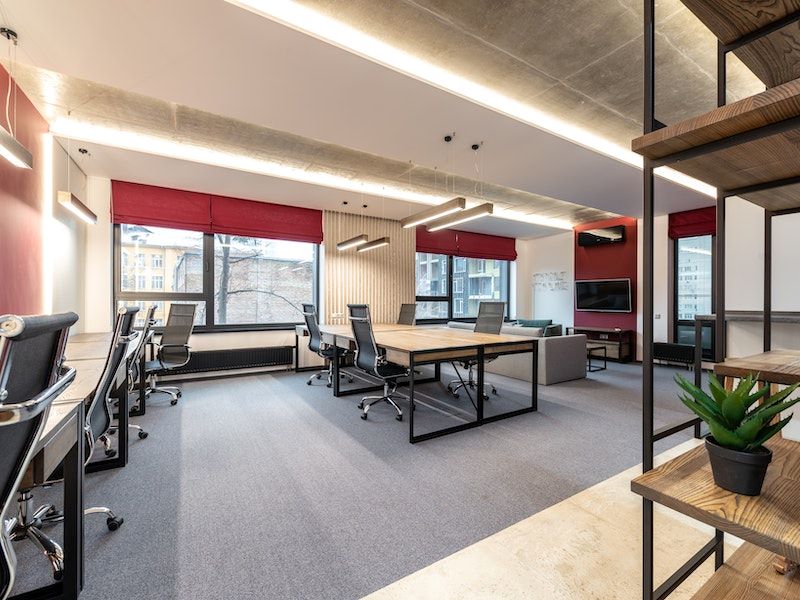How Facility Software is a Game-changer for Managing Assets

Facility asset management is one basic and at the same time most essential process in any business managing facilities. It unifies a business’s financial, inventory, and contractual operations in one location, and supports strategic decision-making. And so, asset management is critically important.
An effective facility asset management process is thus crucial for businesses. Finally, it’s the asset performance that decides the performance of your facilities. Although manual approaches, like using Excel spreadsheets, may be adequate, asset-heavy facilities can only really profit from facility software with comprehensive asset management features.
The list of things your staff needs to keep track of is sure to increase with time, including everything from desktops and servers to company-issued mobile devices to recent additions like IoT. However, when it comes to tracking and managing these assets, the majority of firms lack comprehensive control.
Regardless of industry, businesses using facility software always have a greater chance of managing their assets significantly. There are countless benefits that facility software offers for asset management. Here, we discuss those that stand out.
Excellent monitoring of fast-moving assets
It would be difficult to keep a worksheet updated by keeping track of fast-moving assets. With the manual approach, it would be extremely difficult for you to keep a track of assets in real time. Tracking those assets may get challenging if a later employee fails to renew the transfer of assets.
The inefficiencies you can easily overcome with a facility software tool that uses advanced algorithms and sensors to capture data about the assets, such as location, temperature, and other key metrics. This data is then analyzed to provide insights into the asset’s current position as well as condition and performance.
A facility software tool with strong asset management features thus remarkably improves asset visibility. A central database, usually referred to as an asset register, houses the asset data.
Improved asset life
Increasing asset life aids organizations in making the most of assets in their facilities, from acquisition to disposal. A good facility management system aids in strategic planning in addition to enhancing asset performance.
By leveraging the software’s advanced analytics and machine learning capabilities, businesses can identify potential issues with their assets before they become major problems. The benefits include proactive maintenance, reduced downtime, and extending the life of the asset.
Additionally, the software can track usage patterns and monitor performance metrics, allowing for optimized asset utilization and reduced wear and tear. With the help of facility software, businesses can also ensure that assets are being used in compliance with regulations and best practices, further reducing the risk of failure or damage.
Better asset maintenance scheduling
A key advantage of facility software is the promise of more efficient maintenance planning and scheduling. Facilities can make better judgments about maintaining or replacing assets since facility systems give more information about asset utilization and how frequently they fail. Companies may effectively schedule the time of their maintenance teams by using the data in the facility tool and plan for facility maintenance accordingly.
You can never just shut down the whole system every time you want to do a repair. Instead, you must carefully schedule when you will perform this maintenance and consider how it may affect other factors. With the use of a facility management platform, you can schedule maintenance in a way that causes the least amount of disruption to your facility.
Providing asset management features with predictive capabilities, facility software can alert businesses about assets that require maintenance or inspection. For example, a food processing company using facility software can receive alerts when equipment needs to be serviced, ensuring that the equipment operates optimally and meets efficiency standards.
Ghost asset identification
Assets that show up in your asset register but cannot be physically accounted for are called “ghost assets.” This equipment can have been stolen, misplaced, or even registered incorrectly but is still present in the system.
Asset management features in a facility tool can automatically help locate and get rid of bothersome ghost assets. The benefit is that you don’t have to pay taxes or higher insurance rates on unused items.
Better Asset life cycle management
Businesses can now comprehend the life cycle of any asset. Thanks to asset management software. Understanding the life cycle of an asset in great detail ensures that it is acquired, used, maintained, and eventually disposed of in the most effective manner.
Facility software provides a comprehensive set of tools that can help businesses to manage the entire asset life cycle. From acquisition to disposal, the software can help businesses to optimize their facilities asset management strategies, improving asset performance and reducing costs.
The software can help businesses to plan for asset replacement by providing insights into the useful life of assets and identifying potential issues. Further, the tool also helps businesses in managing their inventory levels, ensuring that they have the right level of assets on hand to meet demand.
Improved and easier asset audits
You should do an audit at least once a year, but preferably more frequently. With this frequency, you can imagine how challenging the audit process will be if you still track firm assets using manual methods.
With a facility tool, you can overcome the limitations of manual processes and carry out the audit process much more efficiently. As we saw earlier, one-way facility software can enhance asset and facility management audits by enabling real-time tracking of assets. Another benefit of integrated facilities management is the automation of asset audits. For instance, a hotel chain can use facility software to automatically generate reports on their inventory of linens and towels, helping to manage their supply chain more effectively.
Save on Tax
Facility software can enable businesses to claim depreciation on their assets, which can help to reduce their tax liability. It can automate the process of calculating depreciation, reducing the risk of human error and ensuring that businesses claim the maximum amount of depreciation they are entitled to.
Additionally, facility software can provide detailed asset information that can help businesses make informed decisions about asset purchases and sales. For example, a real estate company using facility software can track the condition of their properties and the value of improvements made to those properties, enabling them to claim appropriate deductions on their tax returns.
Conclusion
Businesses of all sizes can benefit from asset management features in the facility software application. A cloud-based facility tool can impart seamless flexibility, giving you the ability to tap insights about assets from anywhere using your smartphone.
If you use FieldCircle’s industry-recognized facility software with strong asset management features, you would be many steps ahead. To avail benefits for asset management through your facility software, connect with our experts, today.


